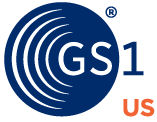Standard Supports Industry’s Transition From U.P.C. to Two-Dimensional (2D) Barcode
EWING, NJ - October 28, 2020 - GS1 US has published a guideline to help the retail industry implement GS1 Digital Link, a standard that allows brands to web-enable barcodes and provide consumers with rich product information. With a single scan of a two-dimensional (2D) barcode (e.g., QR code or Data Matrix) that’s encoded with GS1 Digital Link, consumers can gain access to unlimited and instantly updated, brand-authorized content online, including product data, promotions, ingredients, recipes and more.
GS1 Digital Link leverages Global Trade Item Numbers (GTINs) for product identification, which have been encoded into U.P.C. barcodes and used at the point of sale for more than four decades to aid price lookup. Embedding the GTIN in a 2D data carrier using GS1 Digital Link connects the physical product to the web. The standard can help eliminate the need for multiple on-pack barcodes, freeing up space for brand expression and supporting industry’s need for a more robust data carrier. Recent GS1 US research revealed that 82% of retailers and 92% of brand owners support transitioning from the U.P.C. to a data-rich 2D barcode within the next five years because of the consumer-driven need for more product information.
“Consumers crave additional information about their products—today now more than ever,” said Kelly Ilse Schlafman, intelligent packaging director, Procter & Gamble. “GS1 Digital Link represents a gateway to dynamic, scannable product information for consumers that also gives brands the flexibility to curate information all from one symbol.”
Additionally, GS1 Digital Link supports retailer business processes, enabling faster and more accurate product traceability, efficient inventory management and product authentication through access to expanded product details. When implemented, the barcode can give retail associates additional information such as the batch/lot or serial number, which can help prevent fraudulent returns. It can also enable more immediate access to freshness dates and product status for better management of recalls and expired products pre- and post-purchase, while allowing for automatic discounts of nearly expired products at checkout.
“GS1 Digital Link is a revolutionary way to help retailers eliminate time-consuming and manual processes such as price markdowns or removing recalled products,” said Jeffrey Cree, senior manager supply chain demand planning, Retail Business Services, a company of Ahold Delhaize USA. “For the first time, we have the ability to align the digital supply chain with the physical supply chain, which will help to reduce friction and add more value for our customers.”
The GS1 US implementation guideline outlines how to use the GS1 Digital Link standard and incorporate it into existing business processes. It defines how to structure web addresses to contain expanded product information and the detailed attributes that are increasingly important for digital commerce. Additionally, the guideline provides examples of how GS1 Digital Link can help streamline product information across siloed data management systems allowing limitless product content to be connected to products through the internet.
“Currently, there is not a seamless, non-proprietary way for brands and retailers to communicate product data to consumers, and the proliferation of multiple codes on products causes confusion for consumers and trading partners,” said Melanie Nuce, senior vice president, corporate development, GS1 US. “The GS1 US Implementation Guideline for GS1 Digital Link marks the beginning of a new era where emerging data carriers can enable multiple, ever-changing experiences beyond the U.P.C.’s original price lookup function and also make our products ‘smart.’”
For more information on GS1 Digital Link and the guideline, please visit https://gs1us.org/gs1digitallink.
About GS1 US:
GS1 US®, a member of GS1 global, is a not-for-profit information standards organization that facilitates industry collaboration to help improve supply chain visibility and efficiency through the use of GS1 Standards, the most widely used supply chain standards system in the world. Nearly 300,000 businesses in 25 industries rely on GS1 US for trading partner collaboration that optimizes their supply chains, drives cost performance and revenue growth, while also enabling regulatory compliance. They achieve these benefits through solutions based on GS1 global unique numbering and identification systems, barcodes, Electronic Product Code (EPC®)-based RFID, data synchronization and electronic information exchange. GS1 US also manages the United Nations Standard Products and Services Code® (UNSPSC®). For more information, please visit https://www.gs1us.org.

